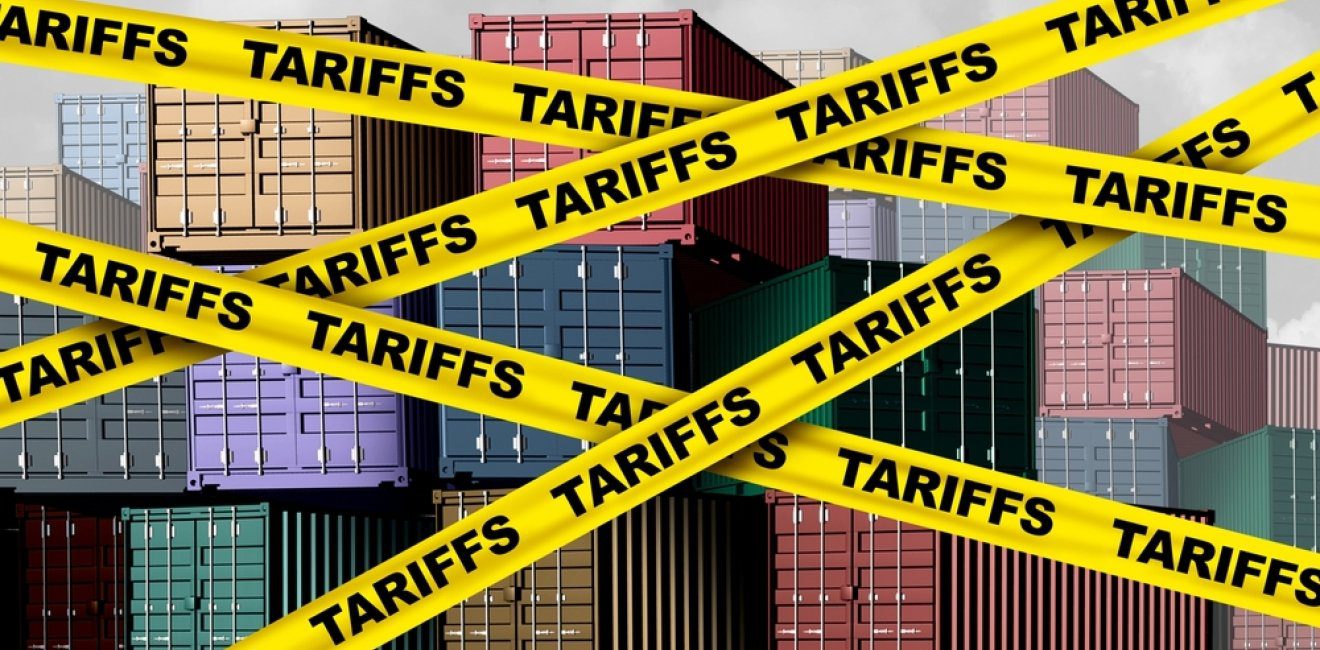President Donald Trump imposing 104% tariffs on China imports marks another episode in the economic soap opera between the world’s two largest economies. It’s like watching someone try to win a chess match by flipping the board—dramatic, yes, but perhaps not the strategic masterstroke intended. While designed to pressure Beijing into concessions, analysis suggests these measures may ultimately strengthen China’s global trade position while creating significant economic challenges for American consumers and businesses. Plot twist!
Limited Exposure Reduces Chinese Vulnerability (Or: Why Beijing Isn’t Losing Sleep)
According to the Chinese Customs Administration, exports to the United States represent just 14.99% of China’s total exports—a figure that has Chinese officials saying, “Is that all you’ve got?” This relatively modest exposure provides China with significant economic resilience against US-specific trade barriers. It’s like threatening to take away one slice from someone who owns several pizzas—annoying, sure, but hardly starvation.
While an immediate disruption to this trade segment would certainly create short-term economic pain (cue the world’s smallest violin), Beijing has multiple avenues to mitigate these effects over time. China’s massive domestic market of 1.4 billion consumers provides a substantial buffer against external economic shocks. That’s a lot of people buying stuff! Additionally, the country has been systematically diversifying its trade relationships through initiatives like the Belt and Road Initiative (BRI)—affectionately known as “The Project That Launched A Thousand Infrastructure Projects”—and the Regional Comprehensive Economic Partnership (RCEP), which connects China with 14 other Asia-Pacific nations in the world’s largest trade bloc.
European Pivot: China’s Strategic Opportunity
Trump’s aggressive trade stance inadvertently creates a strategic opening for Chinese companies to deepen their presence in European markets. As American goods potentially become less competitive globally due to retaliatory tariffs, Chinese manufacturers can position themselves as more reliable trading partners.
European markets present a particularly attractive alternative for Chinese exporters facing headwinds in the US. The EU remains the world’s largest single market with a GDP of approximately €15 trillion ($16.6 trillion) and 447 million consumers with high purchasing power. While China-EU trade relations have their own complexities, they lack the confrontational dynamic that has come to characterize US-China economic relations.
Recent data supports this potential pivot. China-EU bilateral trade reached €853 billion in 2023, making China the EU’s largest trading partner. Investment flows between the regions have also been increasing, with Chinese foreign direct investment in Europe showing signs of recovery after pandemic-related disruptions.
Economic Pain Points for American Consumers (Or: Shooting Yourself in the Foot, But Make It Fashion)
The economic impact of additional tariffs would fall disproportionately on American consumers, particularly those in middle and lower-income brackets who form a significant portion of Trump’s political base. It’s the economic equivalent of a self-own, but with PowerPoint presentations.
Studies of Trump’s first-term tariffs found that almost the entire cost was passed on to American buyers—shocking absolutely no one with a basic understanding of economics. According to research from the Federal Reserve, Moody’s Analytics, and Princeton University, the average American household paid approximately $831 per year in higher prices due to tariffs imposed between 2018 and 2019. An additional 50% tariff would substantially increase this burden. That’s right, folks—it’s the “Make Americans’ Wallets Lighter Again” campaign!
This economic reality creates a fundamental political dilemma for the administration. The very voters who supported Trump’s presidency would bear the brunt of price increases on everyday consumer goods, from electronics and apparel to household items and automotive parts. “Thanks for your vote! Here’s your significantly more expensive toaster!” The inflationary impact could be particularly severe given that the US economy is already grappling with elevated inflation levels. It’s like trying to put out a fire with a flamethrower—creative, but counterproductive.
Supply Chain Realities Limit Quick Adjustments
The interconnected nature of global supply chains further complicates the picture. Many American companies have spent decades building complex production networks that rely heavily on Chinese components, expertise, and manufacturing capacity. Re-shoring these operations or finding alternative suppliers requires significant time, capital investment, and organizational restructuring.
According to a 2023 survey by the American Chamber of Commerce in China, despite geopolitical tensions, 74% of American companies operating in China had no plans to relocate their production or sourcing outside of China. This reluctance stems from China’s unparalleled manufacturing ecosystem, skilled workforce, and infrastructure advantages that remain difficult to replicate elsewhere.
Negotiation Leverage Favors Chinese Resilience (Or: Beijing’s Comfortable Waiting Chair)
The asymmetric impact of tariffs gives Beijing significant leverage in any trade negotiations. While Chinese officials have promised to “firmly safeguard its legitimate rights and interests”—diplomatic speak for “nice economy you have there, shame if something happened to it”—they also recognize that time may be on their side in this economic standoff.
As American consumers feel the pinch of higher prices and businesses struggle with supply chain disruptions, political pressure will likely mount on the administration to reach a compromise. “How’s that tariff working out for your re-election campaign?” Meanwhile, China can deploy targeted support to affected export sectors while accelerating its efforts to develop domestic technologies and alternative markets. They’re essentially turning lemons into lemonade, and then selling that lemonade to Europe.
This dynamic suggests that rather than forcing major concessions from Beijing, Trump’s tariff gambit may ultimately necessitate a face-saving retreat once the domestic economic and political costs become untenable. The suggested “teasing of talks” alongside the tariff threats indicates that even the administration recognizes the need for an eventual diplomatic off-ramp. It’s like threatening to hold your breath until you get what you want—eventually, biology wins.
In the long view of global trade relations, Trump’s aggressive tariff strategy may prove counterproductive to America’s economic interests while inadvertently accelerating China’s emergence as a more diversified global trading power with stronger positions in European and emerging markets. It’s the geopolitical equivalent of helping your competitor train for the big race. The question remains not if, but when economic realities will force a re-calibration of this approach. As they say in Beijing, “Thank you for the motivation, Mr. President!”

President | S.J. Grand Financial & Tax Advisory
Latest Articles:
- China’s New AI Labeling Rules Take Effect: A Step Toward Transparent AI Content
- Shanghai Launches Maternity Leave Subsidy to Support Working Mothers
- The Complete Guide to Sourcing from China: Your Path to Business Success
- Amendments to China Anti-Unfair Competition Law 2025
- China’s R&D Super Deduction Policy






